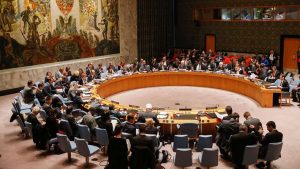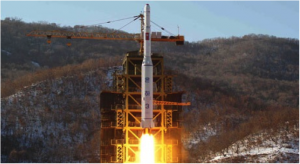United Nations Security Council
Final Documents:
- Resolution topic A – download here
- Resolution topic B –download here
- Report – download here
The United Nations Security Council (UNSC) is an executive body of the UN composed by fifteen members, being five permanent, with veto power, and ten non-permanent. The members of the Council have the main responsibility of taking actions in situations of threats to international peace and security. To fulfill its mandate, the UNSC can resort to diplomatic negotiations, sanctions or the use of force (ORGANIZAÇÃO DAS NAÇÕES UNIDAS, 1945).
Topic A – General issues relating to sanctions
Chapter VII of the UN Charter assigns the UNSC with the prerogative of imposing sanctions in order to pressure a State that threats international stability. The sanctions do not involve the use force, but economic and political measures to the maintenance of international peace and security (ORGANIZAÇÃO DAS NAÇÕES UNIDAS, 1945; SECURITY COUNCIL REPORT, 2013, p.2).
The Article 41 of the Charter does not establish specific rules regarding sanctions, being the responsibility of the UNSC to appoint the type of sanction that will be applied among four possibilities: diplomatic rupture; travel ban; assets freeze; arms embargo; and commodities interdiction (SECURITY COUNCIL REPORT, 2013, p.2). The efficiency of a sanction is defined by its compliance with its main objective: for example, if the goal is to end a conflict and it is accomplished, then the sanction is considered efficient. This criteria, however, disregards the global impact of sanctions and its collateral effects upon economy, politics, and social stability (WEISS et al., 2010).
Therefore, delegates must draw a resolution that defines enforcement measures to improve sanctions design and efficiency, at the same time, reducing its negative impact over society.

Image 1- UNSC’s meeting
Topic B – Non-proliferation / Democratic People’s Republic of Korea
The Democratic People’s Republic of Korea (DPRK) conducted nuclear tests in 2006, 2009, 2013 and 2016 in violation of resolutions 1718 (2006), 1874 (2009), 2087 (2013a) and 2094 (2013b) of the Security Council, which condemned the tests and determined restrictions to this country. The sanctions involved arms embargo, prohibition on exports, assets freeze and others (UNITED NATIONS SECURITY COUNCIL, 2006; 2009; 2013 a, 2013 b).
These measures, however, have failed: 2016 begun with new tests from DPRK. In response, the UNSC approved the hardest sanctions so far: the export restrictions are now extended to coal, iron and air fuels, and financial institutions are obliged to freeze any assets belonging to the North Korean government (“DPR…”, 2016).
Failure in compliance with previous resolutions of the UNSC creates an uncertain atmosphere in the international system. Therefore, delegates must create a resolution proposing ways to improve the efficiency of sanctions imposed to North Korea, considering not only the retreat of its nuclear programme but also ways of minimizing the negative impacts of sanctions on civil society.

Image 2 – North Korean nuclear test in 2013
REFERENCES
“DPR Korea: Ban welcomes Security Council measure tightening and expanding sanctions”. In: United Nations News Centre, 02 March 2016. Available at: <http://www.un.org/apps/news/story.asp?NewsID=53354#.VuXxKX0rLDc>. Access in: 13 March 2016.
ORGANIZAÇÃO DAS NAÇÕES UNIDAS (ONU). Cartas das Nações Unidas. São Francisco, 1945. Available at: <https://nacoesunidas.org/carta/>. Access in: 25 January 2016.
SECURITY COUNCIL REPORT (SCR). UN Sanctions. Special Research Report, n.03, 25 November 2013. Available at: <http://www.securitycouncilreport.org/atf/cf/%7B65BFCF9B-6D27-4E9C-8CD3-CF6E4FF96FF9%7D/special_research_report_sanctions_2013.pdf>. Access in: 25 January 2016.
UNITED NATIONS SECURITY COUNCIL (UNSC). Resolution 1718 (2006) – Establishment of a Security Council Sanctions Committee (1718 Committee). Adopted by the Security Council at its 5551st meeting, on 14 October 2006, S/RES/1718. Available at: <http://www.un.org/ga/search/view_doc.asp?symbol=S/RES/1718%20%282006%29>. Access in: 26 January 2016.
——-. Resolution 1874 (2009) – 1718 Sanctions Committee (DPRK). Adopted by the Security Council at its 6141st meeting, on 12 June 2009, S/RES/1874. Available at: <http://www.un.org/ga/search/view_doc.asp?symbol=S/RES/1874%282009%29>. Access in: 26 January 2016.
——-. Resolution 2087 (2013) – 1718 Sanctions Committee (DPRK). Adopted by the Security Council at its 6904th meeting, on 22 January 2013 a, S/RES/2087. Available at: <http://www.un.org/ga/search/view_doc.asp?symbol=S/RES/2087%282013%29>. Access in: 26. Jan. 2016.
——-. Resolution 2094 (2013) – 1718 Sanctions Committee (DPRK). Adopted by the Security Council at its 6932nd meeting, on 7 March 2013 b, S/RES/2094. Available at: <http://www.un.org/ga/search/view_doc.asp?symbol=S/RES/2094%282013%29>. Access in: 26 January 2016.
WEISS, T. G. et al. The United Nations and Changing World Politics. Philadelphia: Westview Press, 2010.
Images
Image 1: UNITED NATIONS SECURITY COUNCIL (UNSC). “Security Council Subsidiary Bodies: An Overview”. In: Official website of the United Nations Security Council, 2016. Available at: <https://www.un.org/sc/suborg/>. Access in: 24 January 2016.
Image 2: “NORTH Korea nuclear test ‘imminent’”. In: The Guardian, 5 February 2013. Available at: <http://www.theguardian.com/world/2013/feb/05/north-korea-nuclear-test-imminent-south>. Access in: 26 January 2016.